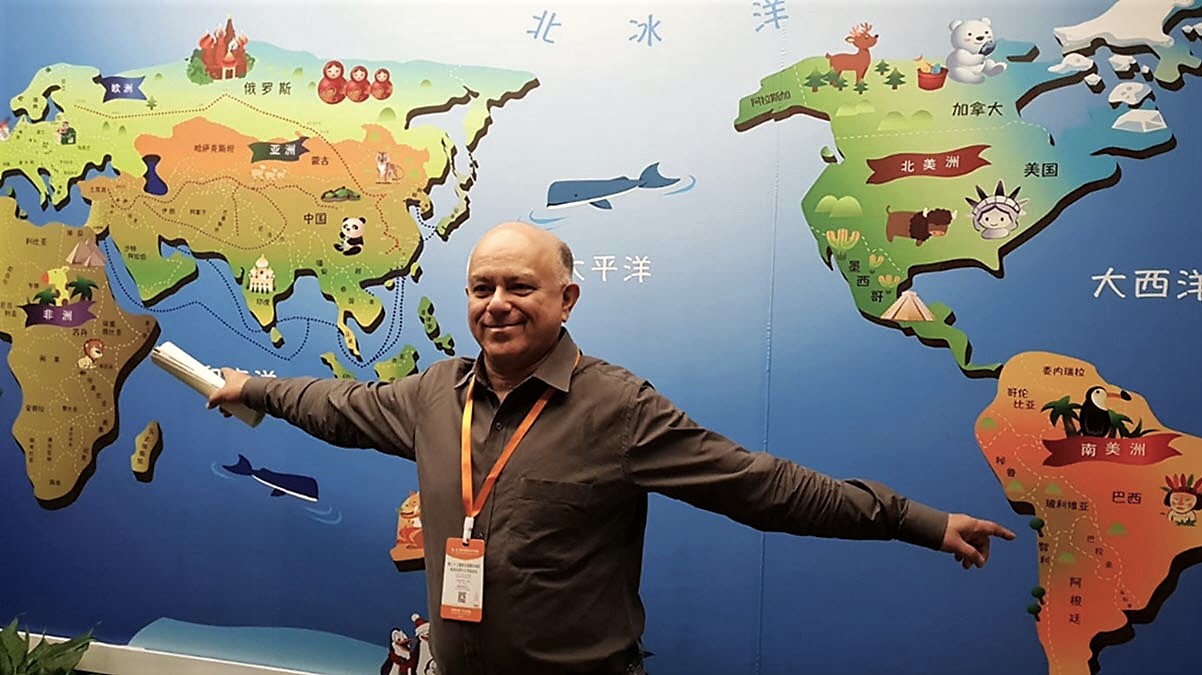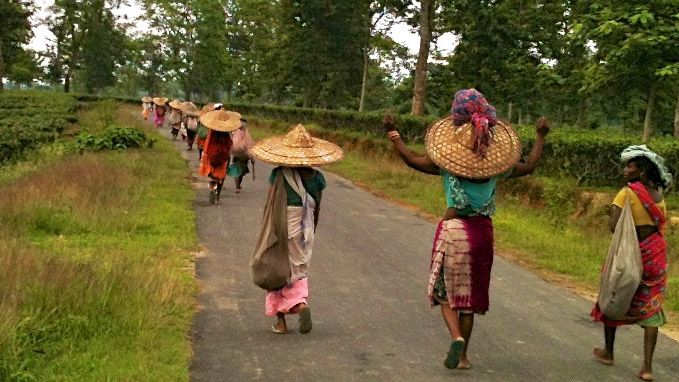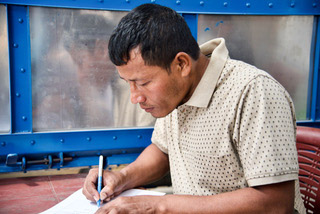Hear the Headlines
| India Tea Industry Reforms
| Glasgow Climate Pact Boosts Morale, but Will Momentum Build?
| Drinking Tea Linked to Lower Risk and Severity of Stroke
| Golden Leaf Awards Return
Features
In Part 2 of this extended Newsmaker Interview, Aravinda Anantharaman speaks with Tea Board of India Chairman Prabhat Bezboruah who describes a new board mission to increase consumption, promote tea exports and expand markets at home and overseas. He also addresses discussions underway to transfer regulatory oversight of India’s tea industry from the Ministry of Commerce to the Ministry of Agriculture and Farmers Welfare. Read more…
India Initiates Tea Industry Reforms
By Aravinda Anantharaman
India’s highest levels of government are reforming the basic structure of agriculture. The intent is to loosen regulations on pricing and storage and to permit direct sales of produce. The rules have protected India’s farmers from the free market for decades. Prime Minister Narendra Modi has called the reforms a “watershed moment” for Indian agriculture. Opposition by farmers has been so intense that Modi announced in November that the government will abandon the September 2020 reforms. Will tea reforms go forward? In this Newsmaker Interview Prabhat Bezboruah, Chairman of the Tea Board of India describes a new board mission to increase consumption, promote tea exports and expand markets at home and overseas. He also addresses discussions underway to transfer regulatory oversight of India’s tea industry from the Ministry of Commerce to the Ministry of Agriculture and Farmers Welfare.
Listen to the interview (Part 2)
Listen to the interview (Part 1)
News

Glasgow Climate Pact Boosts Morale, but Will Momentum Build?
By Dan Bolton
The Glasgow Climate Pact constructively addresses issues critical to the tea industry both for brands and producers. The document also advances efforts to end deforestation and to phase down (not phase-out) coal.
COP26 brought into line the four largest polluters when India announced plans to reach net-zero emissions by 2070. India is the world’s fourth-biggest emitter of carbon dioxide. China announced it will be carbon neutral by 2060 and both the US and EU reaffirmed their commitment to reach net-zero by 2050.
The pact makes concrete tools to curb warming and establishes new rules to hold countries accountable for curbing emissions but falls short of financing efforts in less developed countries. The pact also leaves unresolved how much and how quickly each nation will cut emissions. Delegates returned to their homelands demonstrating greater cohesion and consensus that every nation must do more before the 2022 summit.
Tea brands welcome rules to encourage trade emission-reduction credits and prevent double-counting and wording that allows carbon-market credits from decades past (Kyoto Protocols).
The agreement advances the Paris Accords but pledges made by 197 countries are unlikely to contain atmospheric temperatures at less than 1.5 degrees Celsius above their pre-industrial levels. Scientists estimate that close adherence to pledges may limit global warming to around 2.4 degrees Celsius. Others say temperatures will increase by 2.7 degrees Celsius.
Warming to either level will wreak havoc in the tea lands. Degrading tea quality and reduction in yield are already apparent in three regional hotspots.
South India is one of the hotspots where tea production is threatened along with the Rift Valley in Africa and portions of China.
Biz Insight – Many of the 74 nations where tea is produced find it difficult to finance climate mitigation efforts at the farm level. Unresolved at this year’s summit are concrete steps by developed countries to make good on a $100 billion a year promise made in 2009 to assist poor nations. Contributions in 2019 were $30 billion short and $50 billion of what was pledged is directed at mitigation with much less earmarked to finance adaptations. In Glasgow, delegates asked that countries “at least double” to $40 billion the money committed to financing adaptations making possible construction of clean energy alternatives to coal and wood.

In-person Judging Returns for the 2021 Golden Leaf Awards
By Jessica Natale Woollard
Australia’s Golden Leaf Awards return in 2021 with live, in-person judging to crown this year’s best teas in the Australian market. Tea submissions are open until Nov. 30. View the award guidebook for more information.
The Golden Leaf Awards are presented by the Australia Tea Masters and feature a number of categories: green, black, white, yellow teas; matcha; Pu-erh; herbals; chai; and iced tea. There’s even a category for tea packaging and best tea house.
The judging is blind and done by industry professionals. Learn more…
Australia Tea Masters founder and CEO Sharyn Johnston speaks with Tea Biz’s Jessica Natale Woollard about this year’s event.
Listen to the interview

Tea and Coffee Drinkers are Less Likely to Suffer Strokes
A decade-long study of 365,000 people suggests that tea and coffee drinkers are 32% less likely to suffer a stroke when compared to nondrinkers.
Results of the UK Biobank study, initiated in 2006 and continued through 2020, were reported this week in the online journal PLOS Medicine. The authors write that “while previous studies have looked at associations between tea and coffee consumption and better brain health, there has been inconsistency in findings.”
“Our findings suggested that moderate consumption of coffee and tea separately or in combination were associated with lower risk of stroke and dementia,” writes lead author and Professor Yuan Zhang at Tianjin Medical University, Tianjin, China.
Associating tea and coffee drinking with better health outcomes does not guarantee that the same outcome will happen for everyone, according to a review of the research published by Medicine Net.
Professor Zhang said it is also possible that coffee and tea consumption might be protective against dementia and post-stroke dementia. Strokes cause 10% of deaths globally, and those who survive often experience post-stroke dementia. People who have had a stroke have a far greater risk of developing dementia than people who have not had a stroke. About 1 in 4 who have had a stroke will go on to develop signs of vascular dementia, according to WebMD. In the US vascular dementia is the second most common form of dementia after Alzheimer’s disease.
Drinking coffee or tea – even in very small amounts – lowered the risk for both strokes and dementia.
Researchers cite weakness in that study participants were in better health than the population as a whole, and that the participants are mainly white and British (96%) “therefore we cannot infer an association that is relevant to everyone in the UK.” Learn more…
Biz Insight – Drinking two to three cups of coffee or three to five cups of tea daily (or in combination) led to a 28% lower risk of dementia compared with those who do not drink tea or coffee. Researchers say that around 40 years of age, the immune system starts to decline. As people age, they experience a form of chronic low-grade inflammation. Experts have linked this kind of age-related inflammation to dementia and cognitive decline. The worldwide population of those aged 60 years and over will grow to 2.1 billion by 2050 according to the United Nations. Rates of dementia are expected to increase alongside this aging population, according to Medical News Today.
– Dan Bolton
- Read more… links indicate the article continues. Learn more… links to additional information from reliable outside sources.
India Tea Price Watch | Sale 45
Large quantities of Kenyan tea imported and blended with Assam, Darjeeling, Nilgiri, and Kangra tea are impacting the quality of Indian teas sold domestically. Indian media report Kenya tea imports increased 146% year-on-year between January and August prompting the Tea Board to take a stern stance. Importers must now report within 24 hours any tea stored for distribution and declare origin, quantity, and describe the quality of leaf stored. Random checks are underway. Read more…
Upcoming Events
November 2021
Iraq Tea Festival | Nov. 28-29 | Baghdad Chamber of Commerce
Baghdad, Iraq |
Click to view more upcoming events.
Share this episode with your friends in tea.
Listen to Tea Biz on Apple Podcasts
Subscribe and receive Tea Biz weekly in your inbox.






























